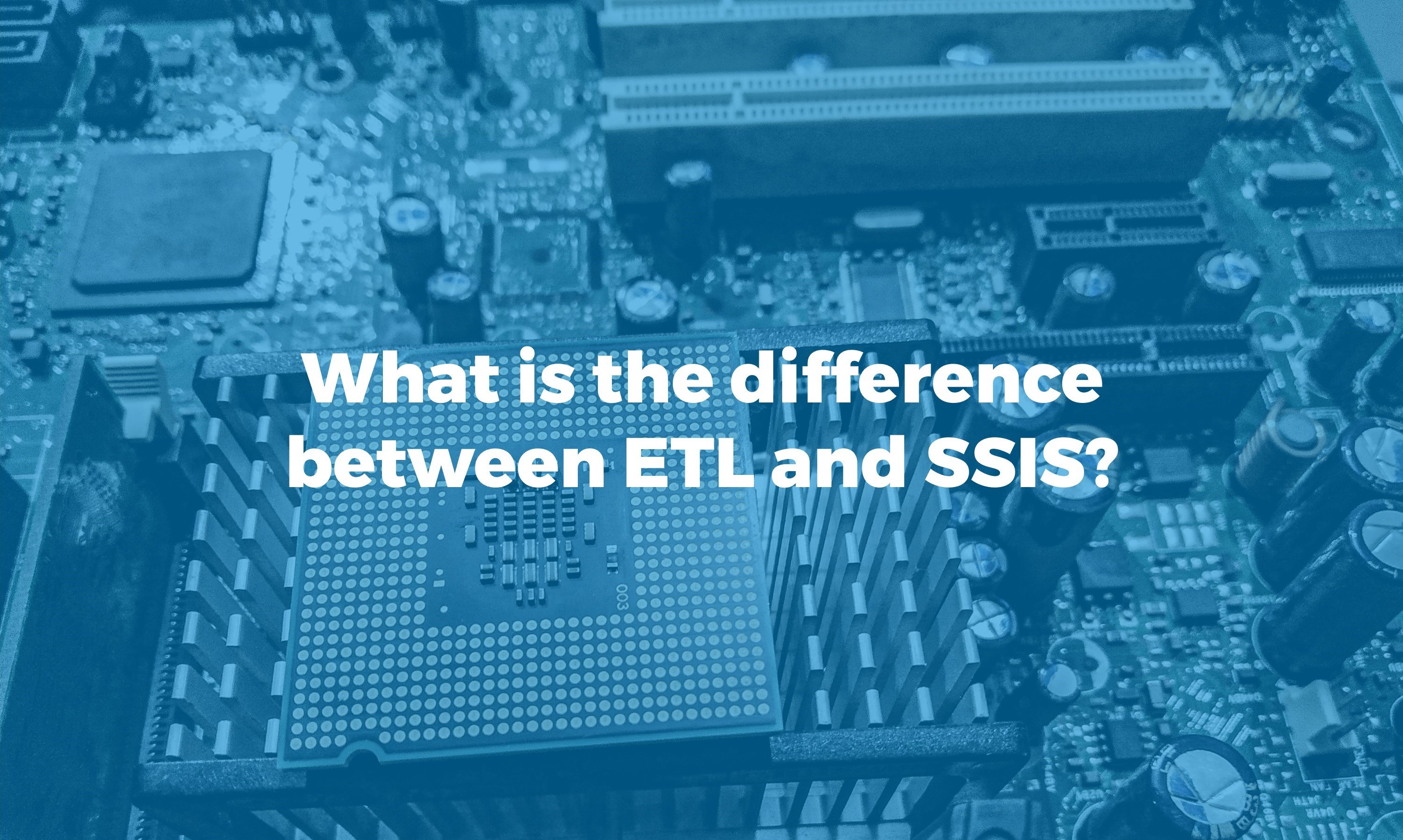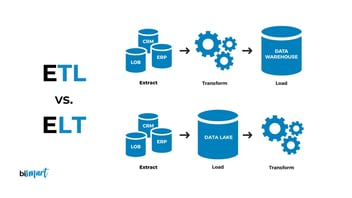We explain why it is not appropiate to talk about the difference between ETL and SSIS and offer definitions for both concepts.
Nowadays there are many well-known data processing processes, tools and platforms. Even so, from time to time it is important to remember the basics: let's talk about ETL and SSIS.

ETL stands for Extract, Transform and Load. These are three database functions that are combined into one tool to extract data from a database, modify it, and place it into another database.
Extract, Transform and Load (ETL)
More specifically, the process of extracting data consists of reading data from a database. The transformation happens when the data is converted —using rules, lookup tables or combining it with others— into data that meets the requirements established with the client and then loading it into a new database or data warehouse.
Using ETL ensures that the data is relevant and useful to the client, that it is accurate, high quality, and easily accessible so that the data warehouse is used efficiently and effectively by the end users.
It is important to mention that in recent years ETL processes are being approached from a new perspective: ELT.
Now more than ever, ensuring the quality and usefulness of data is extremely important. As international data protection regulations have tightened and companies like Google have responded by removing third-party cookies from Chrome, organisations need to rethink their data strategy and adapt to the new era.
Interested in learning about new data best practices following the emergence of new legislation? Download our exclusive Guide "How to survive in a world without cookies" - it's free!
SQL Server Integration Services (SSIS)
SSIS stands for SQL Server Integration Services. SSIS is part of the Microsoft SQL Server data software, used for many data migration tasks. It is basically an ETL tool that is part of Microsoft's Business Intelligence Suite and is used mainly to achieve data integration.
This platform is designed to solve issues related to data integration and workflow applications. It has a storage tool for ETL.
SSIS follows the following steps to achieve the integration:
- It starts with an operational data warehouse, a database designed to integrate data from multiple sources for additional operations on the data.
- The process of extraction, transformation and loading (ETL) is carried out.
- The data warehouse captures data from various sources for useful access and use.
- Data is stored in the data warehouse to bring together and manage data from various sources to answer business questions Therefore, it helps in decision making.
In addition to ETL, SSIS enables other processes such as data cleansing, aggregation, and merging, among others. It facilitates the transfer of data from one database to another and can extract data from a wide variety of sources such as SQL Server databases, Excel files, Oracle and DB2 databases, etc.
SSIS also includes graphical tools and wizards to perform workflow functions such as sending e-mails, FTP operations, data sources and destinations.
The advantages of using SSIS for ETL processes
One of the advantages of using SSIS for ETL processes is its integration with Microsoft SQL Server data software. This tool, part of Microsoft's Business Intelligence Suite, enables efficient extraction, transformation and loading (ETL) of data.
SSIS offers a wide range of functionalities, such as data cleansing, aggregation and merging, and can extract information from different sources, such as SQL Server databases, Excel files, Oracle and DB2 databases. In addition, SSIS has graphical tools and wizards that make it easy to perform workflow functions, such as sending e-mails and FTP operations. This makes SSIS a versatile and easy-to-use option for ETL processes, enabling organisations to efficiently manage and use their data for business decision-making.
It is clear, then, that it would not be rigorous to talk about the difference between ETL and SSIS, since the name ETL refers to a concept, while SSIS is a Microsoft tool developed to work with the ETL concept.
Before you go...
Find out how leading companies are harnessing customer data in a post-cookie world in our exclusive guide!



